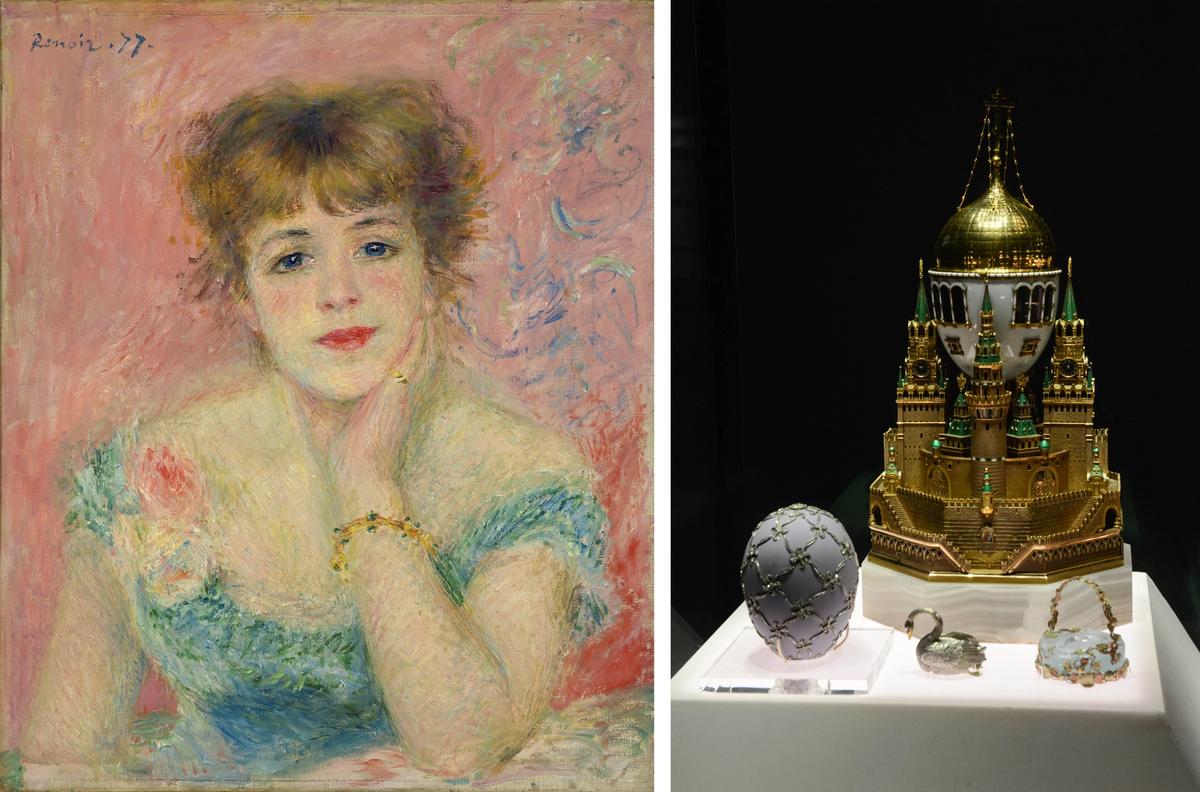Works loaned from Russia for major exhibitions in the UK and Europe are for now remaining on display in the wake of the ongoing conflict in Ukraine. The exhibition Fabergé in London: Romance to Revolution at the Victoria and Albert Museum (V&A) in London (until 8 May), is dedicated to the celebrated Russian goldsmith whose lavish and elegant creations are synonymous with opulence.
Many works are being lent by Russian museums including the Moscow Kremlin Egg (1906), which comes from Moscow Kremlin Museums along with two other eggs: the Alexander Palace Egg (1908), which is decorated with portraits of Tsar Nicholas II and his family, and the Romanov Tercentenary Egg (1913).
A V&A spokeswoman says that “the V&A remains in contact with the Department for Digital, Culture, Media & Sport, DCMS, on the evolving situation in the Ukraine. To date, we’ve had no requests to return loans from Russian institutions.”
The DCMS provides guidance online for protecting foreign loans, saying: “Objects on loan from abroad in temporary exhibitions in UK museums are protected from seizure by the UK courts when they are on display in a museum or gallery which has been approved by the Culture Secretary and where the museum or gallery has published information about the objects on loan.” It adds that the DCMS offers protection for international loans in this way because, in some cases, the ownership of art can be disputed and many countries will not lend to the UK without this protection.
Another major Russian art exhibition at the Fondation Louis Vuitton in Paris—the Morozov collection amassed by the early 20th-century philanthropist brothers Mikhail and Ivan Morozov—will not be forced to close, say officials at the gallery funded by the LVMH luxury brand.
Works by Cézanne, Van Gogh, Derain, Bonnard and Picasso—drawn from the collections of the State Hermitage Museum in Saint Petersburg, and the Pushkin State Museum of Fine Arts and State Tretyakov Gallery in Moscow—are included in the blockbuster show which has so far drawn more than one million visitors.
“According to the law in force since 10 August 1994, the French state cannot seize these paintings, pastels and sculptures because they are the responsibility of foreign public institutions", the lawyer Olivier de Baecque, a specialist in art cases, told Le Figaro. The newspaper reports that an order of exemption from seizure was issued 19 February last year by France's Minister for Europe and Foreign Affairs and the Minister for Culture.
The exhibition was scheduled to end 22 February but has been extended until 3 April. Jean-Paul Claverie, an advisor to the chief executive of LVMH, Bernard Arnault, says: “At the time of writing, I haven't received any calls from the Russian embassy or museums. I remind you that our responsibility is the protection of works. We will therefore ensure, as agreed, their return to their [respective] museums. If the conditions for them to travel safely turn out to be insufficient, we will wait.”


